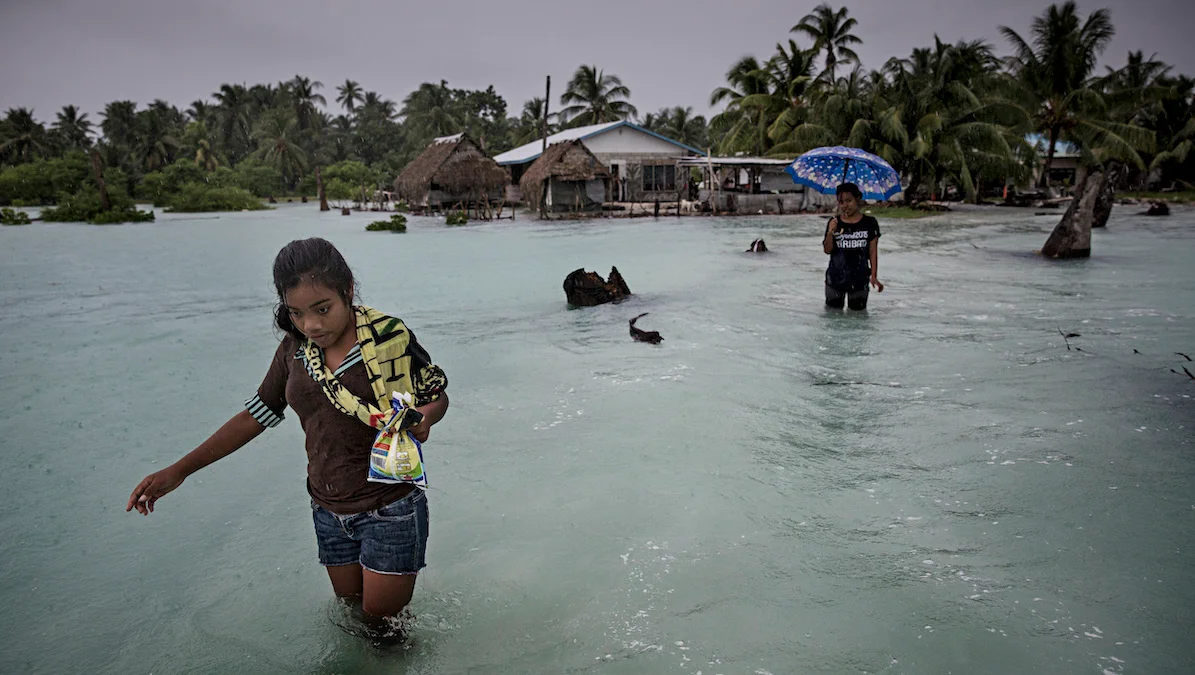By Kalia Ruth Barkai
Despite the rejection of the term “climate refugee” by the United Nations refugee agency, and the International Organisation on Migration (IOM), the term persists in popular media. On Wednesday, the phrase was even added to Dictionary.com.
At first glance, the growing informal use of the term might look like a shift towards recognising and protecting populations displaced by the adverse impacts of climate change.
After all, there is growing evidence of displacement of people due to weather-related disasters. There were nearly 22 million internal displacements due to floods and storms in 2021.
Climate mobility also happens across borders. For example, citizens from the Marshall Islands have migrated to the United States due to the risk of sea level rise, and the increasing pressure of floods and droughts on their homes and livelihoods.
It’s increasingly clear that climate change stressors are leading to both voluntary and forced displacement.
So why shouldn’t the term “refugee” be extended to such populations, leveraging its historical precedence to grant vulnerable populations with international protection?
While its growing popularity might have good intentions behind it, the term is unable to capture the diversity of experiences of those on the move due to climate change, which can lead to more exclusive policies.
Why does language matter?
In international law, labels serve to standardise policies and thereby become instrumental tools. The United Nations 1951 Refugee Convention was drafted in response to the Holocaust with the aim of ensuring international protections for populations being persecuted.
A policy decides not only who deserves protection, but also by extension who doesn’t. The term “climate refugee” implies that populations displaced by climate change are protected by the Refugee Convention. They are not. Experiencing environmental changes does not fall under the ambit of persecution.
Perhaps it is time to expand our definition of “refugee” to include these vulnerable populations?
But opening up the Refugee Convention risks weakening the protections it does offer. Especially with the growing antagonism against immigrant and refugee populations, both in society and in planned policies that leverage security concerns to tighten up border control.
Labels and their definitions create a common language and understanding of issues. However, they are not immune to these changing attitudes in societies.
Unfortunately, “refugee” is increasingly being used to describe people as either victims with little agency or as security threats.
It’s for similar reasons that some people from Tuvalu, an island nation threatened by sea level rise, reject the term “climate refugee”.
Attributing climate change to human mobility
Dictionary.com now defines a “climate refugee” as “a person who has had to flee their home due to the negative effects of climate change”.
Climate change, unfortunately, has many negative effects. It might be clear that those fleeing an extreme weather event, such as storms or flooding, require emergency protections.
Here, it’s easy to attribute the cause of displacement to climate change. But the task is more difficult when the impact develops over time, for example when droughts lead to land degradation and the loss of economic opportunities.
Climate change is also a threat multiplier, meaning it exacerbates existing vulnerabilities. The decision to leave one’s home is usually based on multiple factors.
At what point can we say climate change is the driving factor of displacement? And if moving is only partially motivated by climate change, does that mean the people affected are not deserving of safe migration routes and protection?
Rather than try to reduce the experience of climate mobility into one, provocative, label, we need discussions and international policies capable of creating comprehensive labels that recognise the diversity of experiences and address the context-specific needs of people on the move due to climate change.
SOURCE: CLIMATE HOME/PACNEWS















